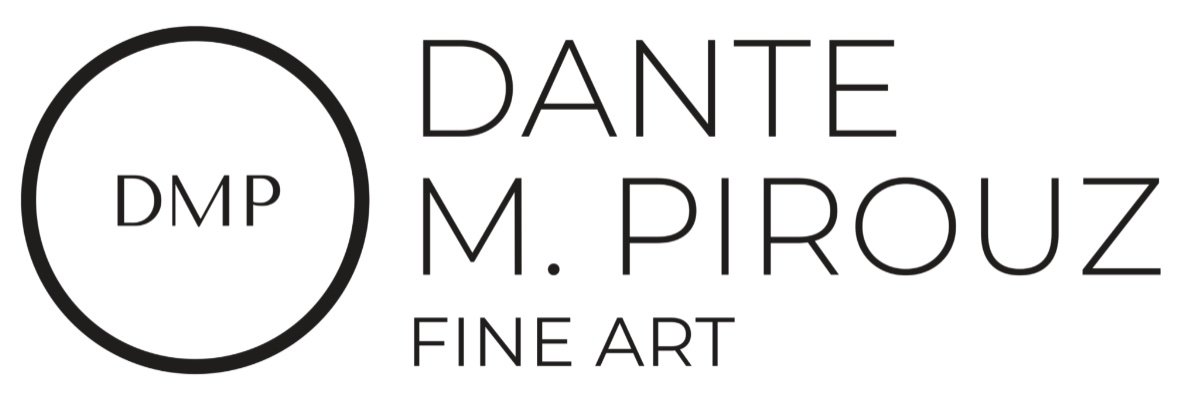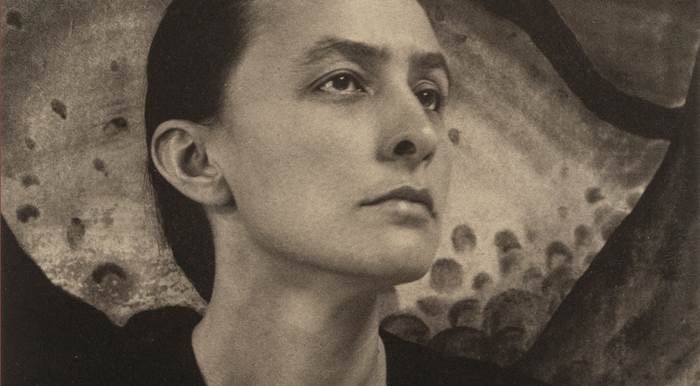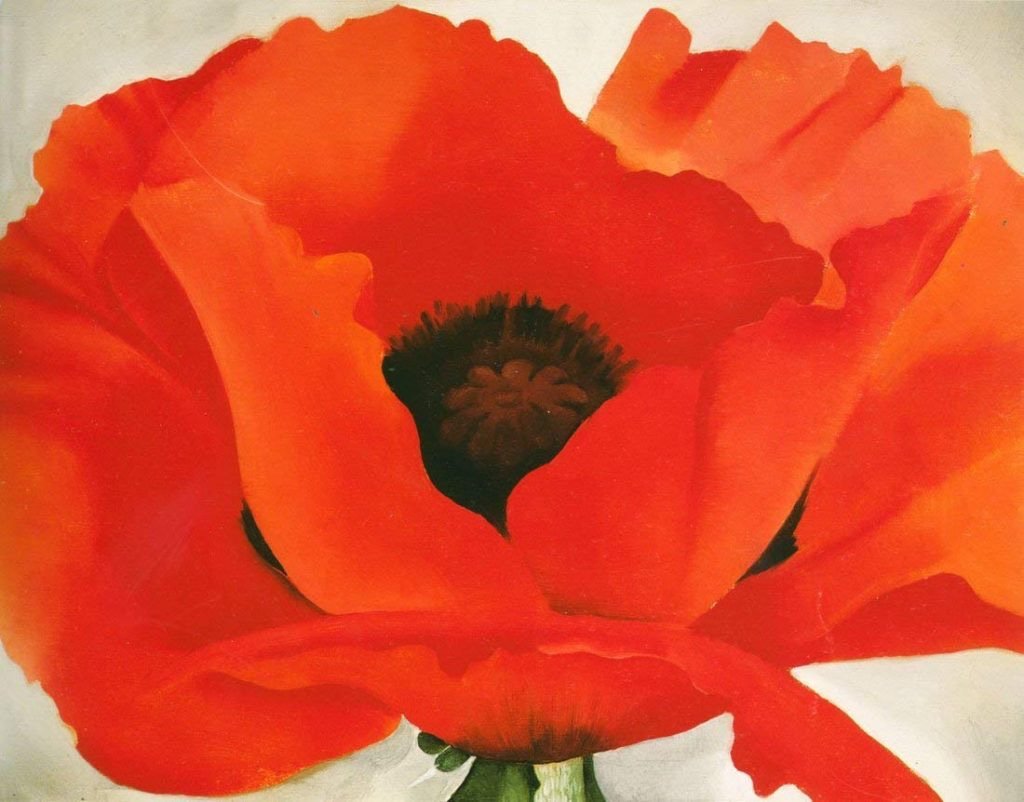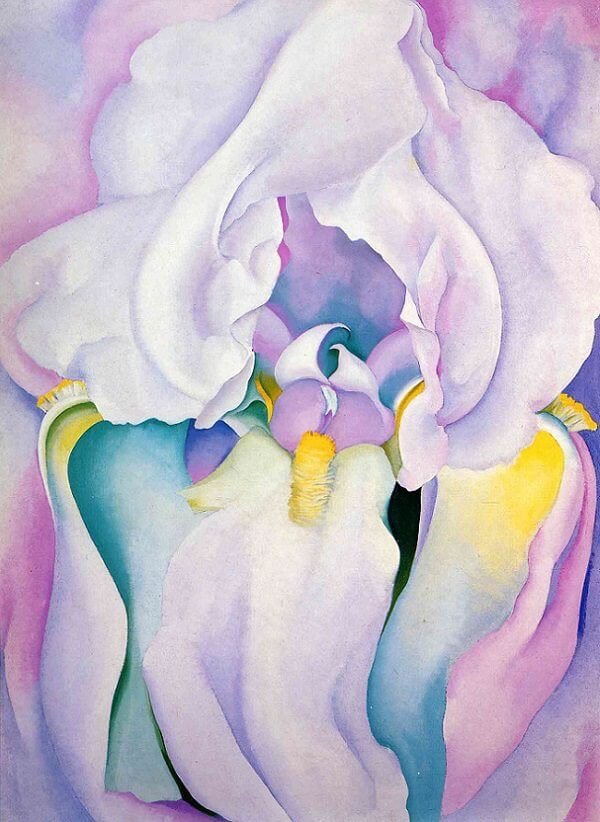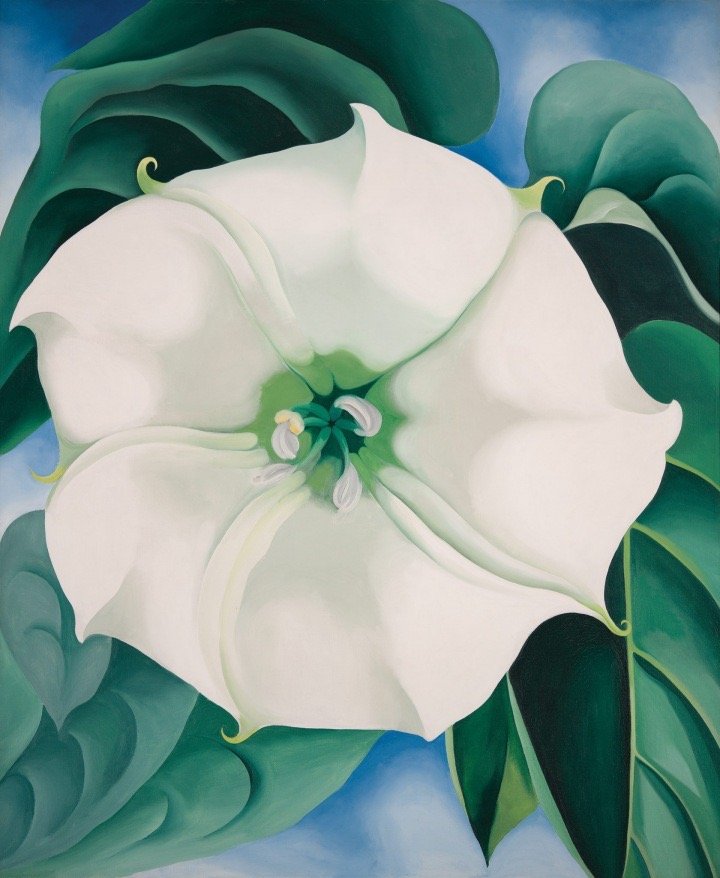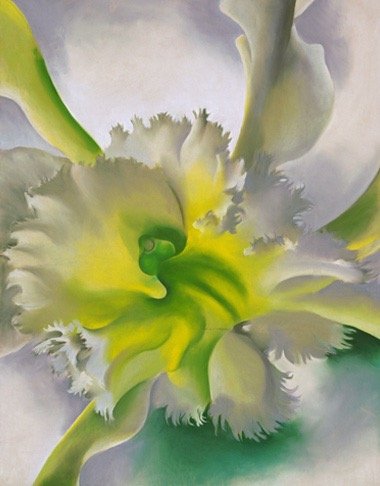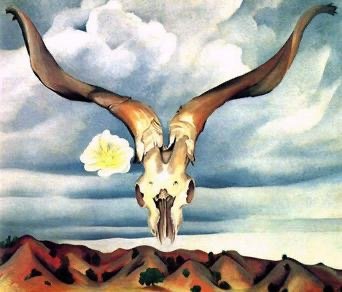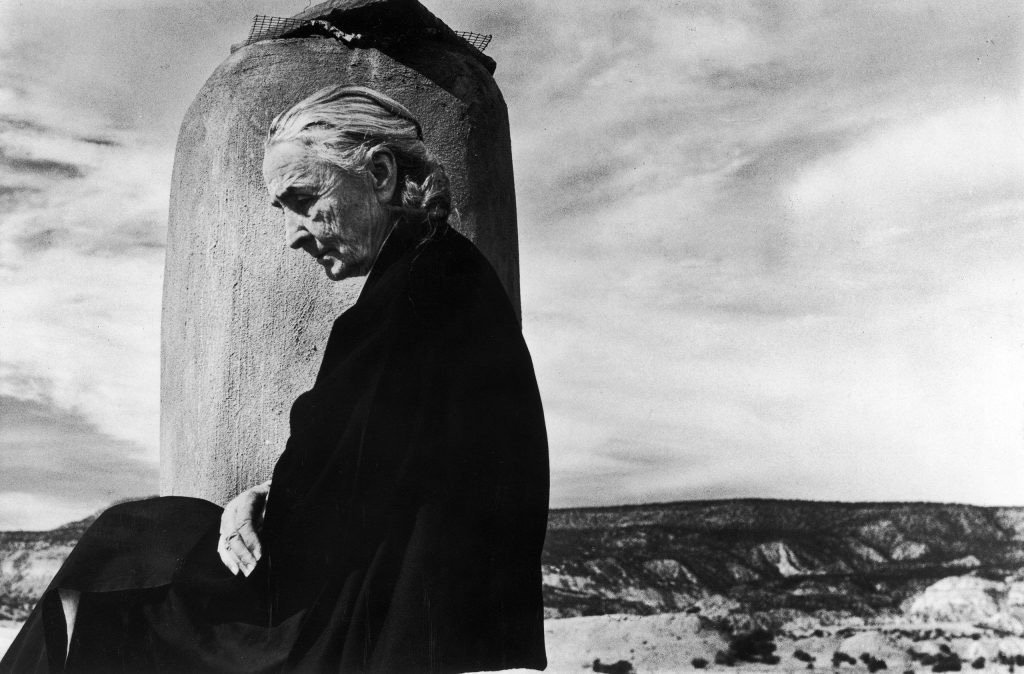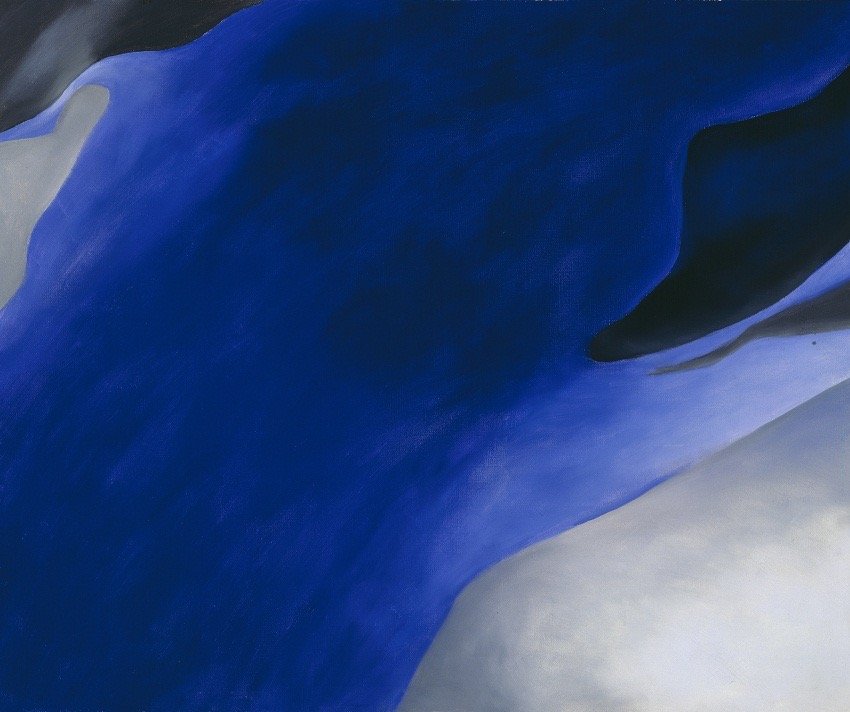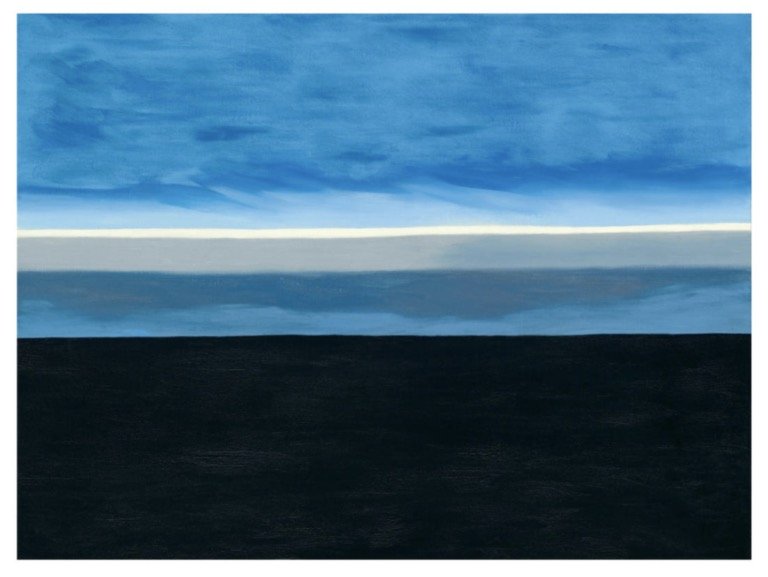Artist to Know: Georgia O’Keefe - The Mother of Modernism
I wanted to write about Georgia O’Keefe (1887-1986) because she is by far my most favorite artist of all time. Not only do I love her work but I love her life story and way of approaching life as well. From what I know about her life, she seemed to always exude extreme confidence and unique authenticity, something that I long to incorporate into my own life. That confidence is not only something you can feel from her most famous works but also from photographs of her.
Artist Georgia O’Keefe
O’Keefe grew up on a dairy farm in Wisconsin, one of 7 children and was named after her grandfather, George Victor Totto, who was a Hungarian count who immigrated to the US in 1848. O’Keefe knew from the age of 10 that she was going to be an artist. Her earliest art instruction was in watercolors from watercolor artist Sara Mann.
O’Keefe’s earliest works: Untitled (Vase of Flowers) (1903–1905) watercolor on paper, Georgia O'Keeffe Museum; Scrapbook (The Rotunda at University of Virginia) (1912–1914) watercolor on paper, University of Virginia; Untitled (Dead Rabbit with the Copper Pot) (1908) Art Students League of New York, won the Art Students League's William Merritt Chase still-life prize in 1908; The Flag (1918) watercolor and graphite on paper, 12 in × 8+3⁄4 in (30 cm × 22 cm), Milwaukee Art Museum.
Once she graduated from high school, O’Keefe enrolled at the School of the Art Institute of Chicago from 1905 to 1906 but due to illness had to take a year off and instead enrolled at the the Art Students League in New York City. She went on to take art courses at the University of Virginia under the tutelage of Alan Bement and learned techniques from his colleague Arthur Wesley Dow who was innovating with ideas and techniques from Japanese art which influenced O’Keefe’s developing style.
In order to support herself financially, O'Keefe became an art instuctor at various institutions. She was an art instructor and department head at West Texas State Normal College, Chatham Episcopal Institute, in Virginia, public schools in Amarillo in the Texas Panhandle for several years.
O’Keefe’s earliest abstractions: Special Drawing No. 2 (1915) charcoal on laid paper, National Gallery of Art; Special No. 8 (1916) charcoal on paper, Whitney Museum; Sunrise (1916) watercolor on paper; My Shanty, Lake George (1922) oil on canvas, The Phillips Collection, Washington, D.C.
In 1918, O’Keefe moved to New York City where her future husband photographer and gallerist Alfred Stieglitz offered financial and artistic support for her career. Both O’Keefe and Stieglitz associated with many of the key artists in the Modernist movement including painters Charles Demuth, Arthur Dove, Marsden Hartley, John Marin, and photographers Paul Strand and Edward Steichen.
During this period, she began integrating architectural themes into her work using techniques that were part of the Precisionist art movement, featuring themes of industrialization and modernization and using geometric shapes and lines.
Stables (1932) Oil on canvas, 12 x 32 in., Detroit Institute of Arts, Gift of Robert H. Tannahill; City Night (1926) oil on canvas, 48 x 30 in. (121.92 x 76.2 cm); A Street (1926 ) oil on canvas, 48 1/8 x 29 7/8 in., Georgia O'Keeffe Museum, Gift of The Burnett Foundation; Radiator Building–Night, New York (1927) oil on canvas, The Phillips Collection, Washington, D.C.
Also during the 1920s, O’Keefe’s work began to shift from abstract and architectural themes to subjects "usually taken from nature and often painted in series.” This marked a period of creative output which would become her signature and beloved style and some of my most favorite artistic images.
Blue and Green Music (1919–1921) oil on canvas, 58.4 cm × 48.3 cm (23.0 in × 19.0 in), The Art Institute of Chicago; Red Canna (1924) oil, 73.7 cm × 45.7 cm (29.0 in × 18.0 in); Red Poppy (1927) oil on canvas, 7 x 9 in., Private collection, New York, NY; Black Iris (1926) oil on canvas, 91.4 cm × 75.9 cm (36 in × 29 7/8 in), Metropolitan Museum of Art; Light Iris (1924) ; Jimson Weed/White Flower No. 1 (1932) oil on canvas, 48 × 40 in. (121.9 × 101.6 cm); Jimson Weed (1936) oil on linen, 180 cm × 212 cm (71 in × 83.5 in), Indianapolis Museum of Art; Orchid (1941) pastel on paper mounted on board, 27 5/8 x 21 3/4" (70.2 x 55.2 cm).
“Nobody sees a flower, really, it is so small. We haven’t time - and to see takes time like to have a friend takes time. If I could paint the flower exactly as I see it no one would see what I see because I would paint it small like the flower is small. So I said to myself - I’ll paint what I see - what the flower is to me but I’ll paint it big and they will be surprised into taking time to look at it - I will make even busy New Yorkers take time to see what I see of flowers. I made you take time to look at what I saw and when you took time to really notice my flower you hung all your own associations with flowers on my flower and you write about my flower as if I think and see what you think and see of the flower - and I don’t.””
In 1936, cosmetics icon Elizabeth Arden commissioned O'Keeffe to paint Jimson Weed for $10,000 the largest amount paid at the time for art painted by a woman. The 71 x 84 inch painting was to hang in the exercise room of the new Arden Sports Salon in New York City and it became one of the largest work that O’Keefe painted.
In 2014, Weed/White Flower No. 1 sold for $44.4 million and set a record for the most expensive artwork by a woman ever sold.
O’Keefe’s work evolved to include not only flowers but other natural objects and landscapes as her life changed and she matured.
In 1929, O’Keefe visited New Mexico for the first time with her friend and fellow artist Rebecca (Beck) Strand. She often packed into the New Mexico countryside and visited the D.H Lawrence House where she painted her famous The Lawrence Tree in 1929.
The Lawrence Tree (1929) Wadsworth Atheneum, Hartford, Connecticut.
O’Keefe would return to New Mexico on an almost annual basis to paint and rest staying for months at at time. It was during these trips, that O’Keefe in addition to continuing to paint her flower and nature themed works, began experimenting with motifs she experienced in New Mexico including animal skulls, native art pieces and landscapes.
Ram's Head, White Hollyhock-Hills (1935) oil on canvas, Brooklyn Museum.
O’Keefe continued to paint and create into her late 80s even although she suffered from macular degeneration which reduced her eyesight to only the periphery and slowed her ability to paint and create.
Georgia O’Keefe on Ghost Ranch, New Mexico, c. 1968.
O’Keefe would become known as the “mother of American Modernism” because of her groundbreaking work on combining abstraction and representation to emote emotional and spiritual themes. Her work, especially from the 1920s to the 1970s, would be considered a precursor to the Abstract Expressionism and Minimalism movements.
A Sunflower from Maggie (1937) 40.64 x 50.8 cm (16 x 20 in.) Oil on canvas; Blue, Black and Grey (1960) oil on canvas, 40 × 30 in (101.6 × 76.2 cm) Georgia O'Keeffe Museum. Gift of the Burnett Foundation; Above the Clouds I (1962-1963) oil on canvas, 36 1/8 x 48 1/4 inches. Gift of The Burnett Foundation and The Georgia O'Keeffe Foundation; The Beyond (1972) Oil on canvas, 30 1/16 x 40 3/16 inches. Georgia O'Keeffe Museum (Santa Fe), Gift of The Georgia O'Keeffe Foundation.
When I visited The Georgia O’Keefe Museum in Santa Fe New Mexico while showing my work at Art Santa Fe in 2023 I was stunned with how much of O’Keefe’s long career I did not know about. At the end of my visit, I bought a greeting card with an image of The Beyond on it and have kept that card on display in my art studio ever since. It was during this research that I learned that O’Keefe’s final unassisted oil painting was The Beyond. I feel a deep connection to Georgia O’Keefe’s courage, grit and authenticity that encourages me to keep going on my artistic journey.
